Amuse UX Conference
October 18-20, 2017 Budapest
October 18-20, 2017 Budapest
18
October
If you have purchased a Workshop ticket
19
October
From 9am - Conference talks
From 6pm – Dinner and Amuse party

There’s a reason so many board gamers show up UX events. The same skills that make us great information wranglers are the same things that make board games like Catan, Pandemic and yes, even Exploding Kittens so appealing! It should come as no surprise that we’ve seen prominent UX leaders cross over into board game design (Matt Leacock, Dirk Knemeyer).
If we scratch beneath the surface, there’s a set of shared skills (and struggles) common to these different professions. Specifically: the spatial arrangement of information, visual encoding of information, creating designed spaces, a systems view, playtesting / user testing, competing tensions, triggering emotional responses, and many more.
Okay, so what? Sure, it’s kind of neat that we have so much in common. But how might this change what I do at? Here’s the honest truth: The game design profession is just a little bit farther down the road than us, and we have a lot to learn from this group if we can look past the superficial differences. We talk about designing for emotions, but let’s face it, game designers are actually winning at this. Processes? We talk about lean and agile, but game designers have mastered playtesting (and the design to playtest ratio should make us embarrassed at how little we actually iterate with users). And there’s plenty more. I’m confident that if we can look our our own profession through the lens of game design, we’ll see plenty of glaring opportunities for improvement, and a few tricks we might pick up, as well.

Animation can be so much more than just decoration, but only if we treat it that way. When used well motion can engage, communicate, and improve interactions on a whole new level. Carefully crafting these moments makes our work more memorable and enjoyable to use. In this session we’ll discuss where animation can best inform UX and how to build more sophisticated animated interactions on the web.

Responsive design is in. Everybody’s talking about it and diligently putting together responsive websites. Yet it’s no easy task to design and build good, fast, and flexible responsive pages. How do you achieve your goal faster? What design patterns can we use and how do we deal with complicated mega-drop-downs, tables, calendars, dashboards, content blobs, tables, maps, modal windows, forms, and interactive elements, including conversational interfaces?
We’ll cover them all. Keep in mind: you won’t be able to unsee the things you’ll see in this session. Yes, it’s going to be dirty, tricky and horribly annoying at times. You’ll leave with a toolbox of practical techniques that you’ll be able to apply to your work right away. And potentially some tips for saving money on airfare, too!

Do you take notes at conference talks, meetings, workshops, in class or to capture your own thoughts? How often do you look back at your notes? How useful are they to review the material and how easy is it to find a particular piece of information when you are looking for it?
In this talk, Eva-Lotta will share her approach of taking visual notes – also called sketchnotes – and guide you through 5 steps that lead you from regular written notes to a more structured, visual and engaging way of mapping out information.
This is a hands-on session for everybody to sketch along, have fun and pick up the 5 basic principles of sketchnoting by trying them out themselves out the talk. If you think you are rubbish at sketching, never go back through your notes and want to get a fun kick-start into using pen and paper, this session will be just right for you.
Get your pens ready!

Voice interaction is now commonplace: we converse with the digital assistants on our phones and our connected home devices, and the experience is improving all the time. But how do we design experiences for voice interaction? What can we learn from the experiences of using first generation voice input/output technologies like screen readers and speech recognition tools?
Full of practical ideas and interesting possibilities, this talk explores the past, present, and future of voice interaction design; and considers how to use the Inclusive Design Principles to create voice experiences that really work.

It’s a given today that design responds to our devices, locations, and preferences. But do we expect it to be responsive to cultural differences? Senongo will talk about factors that can affect how design is perceived in places with different cultural norms, as well as how visual and cultural diversity can be built into every stage of our projects. He will also talk about steps we can take to design for a worldwide audience, in a wholehearted and occasionally subversive way.

Have you ever wondered what techniques stage magicians use to manipulate your perception? Or how they seemingly influence the choices made by audience volunteers? The chances are that you have. What you have probably not considered is how handy those skills would be for a UX designer. What might you achieve with your design if you were better able to manipulate perception and behaviour? In this talk David draws out the connections between magic and user experience design and teaches principles that can be applied to user experience design.

Creating can be a tortured process. Sadly, this torture is often self-inflicted. The angst is not inherent in the creative process itself, but instead comes from the fears we have around our ability to produce. These fears manifest as the Inner Critic, which is the largest block to the flow of original ideas. But there's good news: you can break the power that Inner Critic wields over you to become a creative powerhouse!
In this talk, we’ll begin by exploring the origins of the Inner Critic and discover the tools that you already possess to vanquish it. Then we’ll dive into methods for dealing with the fear of being judged and criticized, how to transform highly critical self-talk into that of approval and encouragement, and ways to feel like your ideas are good enough and stop committing 'ideacide'.
By the end, you’ll have a roadmap of how to channel your creativity as a force for positive change in the world. The potential for greatness lies dormant in all of us. Banishing your Inner Critic is the first step to getting back in touch with the highly productive creative badass that you are and sharing your gifts with the world.

Discover how to use the cutting edge 3D design and abstraction to project user intention inside the landscape of Virtual Reality and Augmented Reality. Learn how to design compelling UX that is intuitive, what concepts translate across each platform, as well as a few things to avoid along the way. These elements can help you create transform immersive virtual reality and augmented reality experiences into something your users will never forget.

Much as we don't like to admit it, users have an expiration date. Even in the best case scenario, where the product and services we design aren't abandoned due to inertia or lack of interest, human beings stop being users when life ends. Or do they? More and more often what is left behind is a digital ghost, a unidimensional clone borne out the million of macro and micro-interactions that we generate during our physical life.
We will embark on a wacky journey through the maze of novelties and oddities that surround the end of life, to understand how we can organize information and systems, and answer those ethical and practical questions raised by death in the digital age.

Peter Eszenyi from Territory Studio talks about the role that fantasy and futuristic technology plays in films, and shares the studio’s approach to interface and interaction design for new technologies.

The UK government is one of the most digitally advanced in the world. Designers across government work to revolutionise the way its services are delivered to users.
Front-end work and interaction design is crucial to this work, but to truly transform government services we need to step back and look at everything involved. From the infrastructure they are built on to the way they appear to the user.
This is the story of the how designers in the UK government are using service design thinking to help government work better for users.

In early 2017, Airbnb launched a feature that showcases travel stories from Airbnb users. Theses stories are an authentic portrayal of life in cities and towns around the world and inspire travelers as they dream about and eventually plan trips on Airbnb. These stories also give Airbnb hosts and guests an opportunity to express themselves creatively and share with the Airbnb community how their lives were affected by travel.
This talk will focus on the research that was conducted throughout Europe, China, and the US to determine how to design stories in a way that is interesting, helpful, and meaningful both to the users that consume stories and the users that create stories.

Meena Kothandaraman from twig+fish will review a case study that involved collaboration with the City of Boston Mayor’s Housing iLab. The Housing iLab was tasked with creating meaningful and sustainable housing and policy solutions to address an emerging problem in the city of Boston: a housing crisis for middle income residents. Thus far, the City gave predominant focus to all the numbers collected on housing preferences and realities. Hearing the personal stories of city dwellers brought to light a more human focus on the emotions, attitudes and preferences that play into housing choices. The study was applauded as an important step forward in the City’s approach, and has inspired the inclusion of human stories across other city challenges. Meena will detail the five-phased approach that provided structure and transparency to this study.

If you’re serious about UX, then it’s time to bust out some games. Seriously. Nearly everything we should know about crafting an experience can be learned (and learned better) by studying game design.
In this workshop, speaker Stephen P. Anderson will expose you to the process of designing a board game, with a special focus on lessons and tools we, as UX designers, can bring back to our daily processes. Some of the ideas may be familiar: Iterative testing and prototypes. Starting with a desired experience. Designing for emotions. Other ideas may be less familiar: Modeling complex systems. Designing for emergent behaviors. Whatever the case, you’ll see your perspective changed as you experience these concepts through a game design lens.
This fast-paced workshop will challenge you to design a game, experiencing first-hand the mindset needed to level up your UX work.
If we can look our our own profession through the lens of game design, we’ll see plenty of glaring opportunities for improvement, and a few tricks we might pick up, as well.

Sketching is a core skill and tool of any designer. It is a quick and cheap way to ideate, develop and iterate on possible design solutions, both alone and with a group.
In this workshop, we will take a closer look at when and how to use sketching in the design process, how to make your sketches communicate more clearly and efficiently and how to run a collaborative sketching session with a group of people. We will start with basic sketching techniques and build up the pace through a mix of theory, exercises, practise sessions and group critiques.
This workshop is ideal for Designers, Developers, Product Managers or anyone who is involved in creating websites or applications and wants to add sketching to their range of tools. All skill levels are welcome and no previous sketching skills or knowledge are necessary.

As creative professionals, we are called upon to produce and deliver original strategies and solutions to make our companies or clients stand out in the crowd, requiring a high level of creative thinking and generation of innovative ideas. But sometimes constantly having to be “on” creatively can be mentally taxing. Furthermore, standard working conditions often can extinguish our creative fire, making it tough to come up with fresh ideas precisely when we need them most. What is needed is a way to work better – so that we can create more.
Through exploring various concepts and approaches, including the neuroscience of creativity, productivity techniques, and emerging practices that spur innovation, we’ll discover not only the ways in which our brains work best, but also what’s behind the times when we feel on fire with creativity and when we don’t. We’ll translate this information into processes and techniques for dramatically enhanced creative productivity. Beware: this workshop challenges the standard norms around concentration, focus, productivity, and may change how you work...for the better.
The Magyar Vasúttörténeti Park (Hungarian Railway History Park) is Europe’s first interactive railway
museum located at a railway station and workshop of the Hungarian State Railways. There are over
a hundred vintage trains, locomotives, cars and other types of railroad equipment on display,
including a steam engine built in 1877, a railcar from the 1930’s and a dining car built in 1912
for the famous Orient Express.
On the conference days there will be direct Amuse trains in the morning from
Budapest-Nyugati Railway Terminal to the venue, and in the evening from the venue
to Budapest-Nyugati Railway Terminal, so we recommend to find a hotel near to
Nyugati
station.
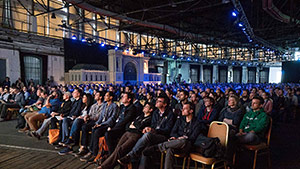
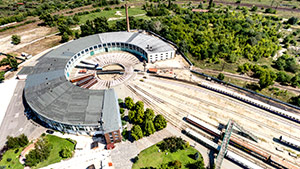
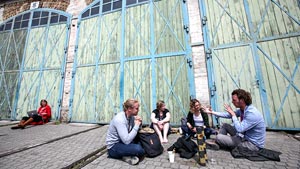
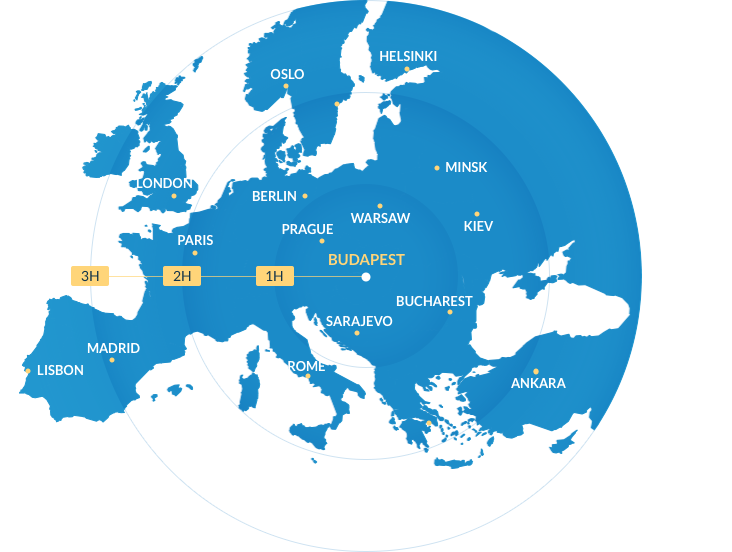
| 9am-6pm | Workshops (only in case you have purchased a separate Workshop ticket) |
| 6pm-10pm | Amuse meetup night and party (RSVP required) |
| 08:04 | Amuse train leaves from Budapest Nyugati train station to the venue |
| From 08:00 | Registration & Breakfast |
| 09:10 | Intro & Welcome |
| 09:25 | Stephen P. Anderson: What Boardgames Can Teach Us About Designing Experiences |
| 10:15 | Chris Monnier: Travel Stories |
| 11:00 | Coffee Break |
| 11:25 | Léonie Watson: The Art of Noise |
| 12:15 | Senongo Akpem: Culturally Responsive Design |
| 13:00 | Lunch Break |
| 14:25 | Eva-Lotta Lamm: 5 Steps to Change Your Note-Taking |
| 15:15 | Val Head: UX in Motion: Principles for Creating Meaningful Animation in Interfaces |
| 16:00 | Coffee Break |
| 16:30 | David de Léon: Design by Magic: Applying the Techniques of Magic to User Experience Design |
| 17:30 | Dinner, Party, Networking 🍻 |
| 20:30 | Amuse train leaves from the venue and arrives to Nyugati Station at 20:52 |
| 08:04 | Amuse train leaves from Budapest Nyugati train station to the venue |
| From 08:00 | Registration & Breakfast |
| 09:10 | Intro & Welcome |
| 09:25 | Denise Jacobs: Banish Your Inner Critic v2.0 |
| 10:15 | Kate Ivey-Williams: From Front-End to Full Service – Design in the UK Government |
| 11:00 | Coffee Break |
| 11:25 | Meena Kothandaraman: Applying a Five-Phased Credible Approach to Qualitative Research |
| 12:15 | Vitaly Friedman: Dirty Little Tricks From the Dark Corners of Responsive Web Design |
| 13:00 | Lunch Break |
| 14:25 | Stephan Tanguay: Virtual Intent: User Experience Design in VR / AR |
| 15:15 | Alberta Soranzo: Our Eternal (Digital) Afterlife |
| 16:00 | Coffee Break |
| 16:30 | Peter Eszenyi: What the F(UI): The Role of Design, UI, and UX in Films |
| 17:15 | Closing Ceremony |
| 18:41 | Amuse train leaves from the venue and arrives to Nyugati Station at 19:04 |
We are looking for sponsors who help us make this non-profit conference happen.
Interested? Contact us at [email protected]





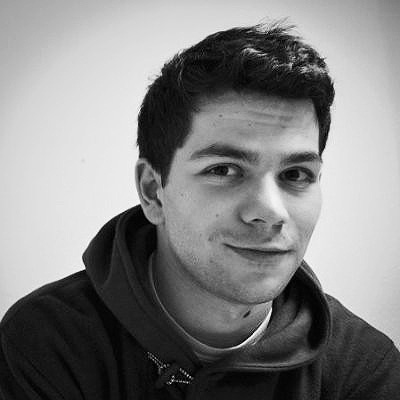


Questions? Drop us a line at
[email protected]
All attendees, speakers, sponsors and volunteers at our conference are required to agree with the following code of conduct. Organisers will enforce this code throughout the event. We are expecting cooperation from all participants to help ensuring a safe environment for everybody. If you need help, contact us at [email protected].
Our conference is dedicated to providing a harassment-free conference experience for everyone, regardless of gender, age, sexual orientation, disability, physical appearance, body size, race, or religion (or lack thereof). We do not tolerate harassment of conference participants in any form. Sexual language and imagery is not appropriate for any conference venue, including talks, workshops, parties, Twitter and other online media. Conference participants violating these rules may be sanctioned or expelled from the conference without a refund at the discretion of the conference organisers.
Harassment includes offensive verbal comments related to gender, age, color, national origin, genetic information, sexual orientation, disability, physical appearance, body size, race, religion, sexual images in public spaces, deliberate intimidation, stalking, following, harassing photography or recording, sustained disruption of talks or other events, inappropriate physical contact, and unwelcome sexual attention.
Participants asked to stop any harassing behavior are expected to comply immediately.
Sponsors are also subject to the anti-harassment policy. In particular, sponsors should not use sexualised images, activities, or other material. Booth staff (including volunteers) should not use sexualised clothing/uniforms/costumes, or otherwise create a sexualised environment.
If a participant engages in harassing behavior, the conference organisers may take any action they deem appropriate, including warning the offender or expulsion from the conference with no refund.
If you are being harassed, notice that someone else is being harassed, or have any other concerns, please contact a member of conference staff immediately. Conference staff can be identified as they'll be wearing branded t-shirts.
Conference staff will be happy to help participants contact hotel/venue security or local law enforcement, provide escorts, or otherwise assist those experiencing harassment to feel safe for the duration of the conference. We value your attendance.
We expect participants to follow these rules at conference and workshop venues and conference-related social events.